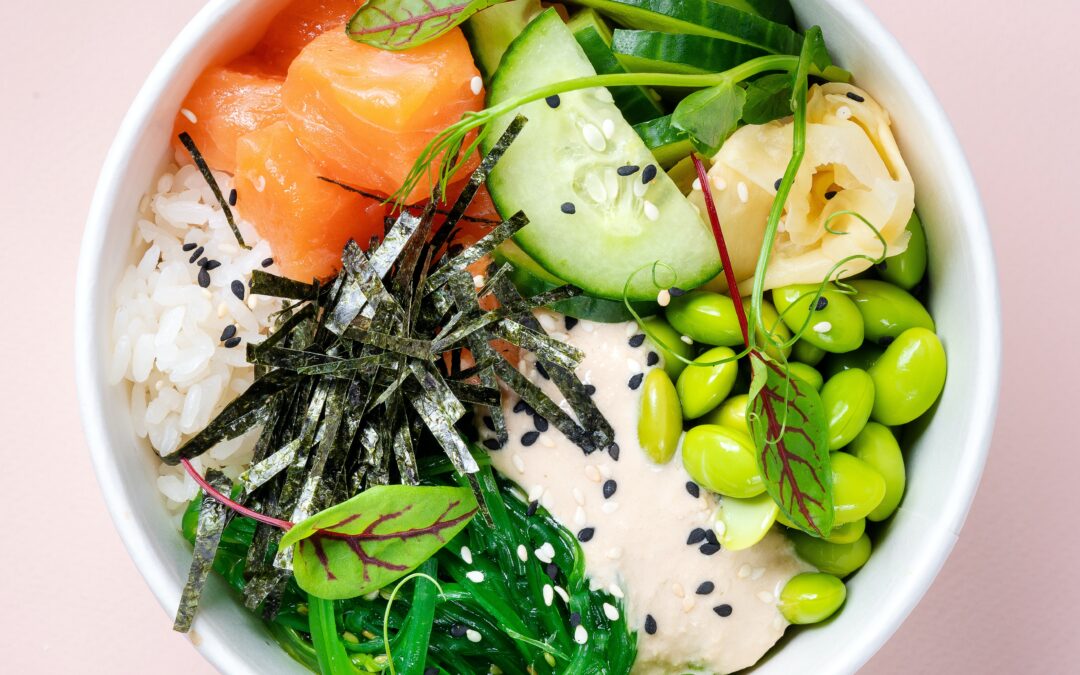HOW have you had seaweed and kelp in dishes? For many of us, the nori around our sushi and seaweed salads are likely the only ways we’ve ever enjoyed it. While these are both fantastic introductions to the curious world of seaweed, there are myriad ways to try it!
And in 2021, seaweed comes in so MANY incredible forms (seaweed pastas, kelp burgers, seaweed pickles..the list goes on!) — it’s easily become one of the most important ingredients in my Sea Pantry.
And I’m not the only fan. Seaweed is becoming increasingly popular on a global scale. It may surprise you to learn that by 2051, seaweed production will take over potato production!
Given that there are a variety of seaweeds and they tend to differ in taste, texture, color, and nutritional content, why not dive in and try to find the ones that you can LOVE? And if you don’t LOVE them at first (and maybe just tolerate them, like my husband Darrell), you can be open to exploring new applications, knowing that you’re making a contributive food choice. With that being said, there’s never been a better time to train ourselves to love this true superfood — for the planet and for your own health!
Photo ℅ Atlantic Sea Farms
Aside from the obvious health benefits (and there are so many), there’s another very convincing, important reason to bring more seaweed into our lives: seaweed is one of the easiest and most sustainable food crops to grow! Growing seaweed requires ZERO inputs, watering, or feed, and these miraculous plants of the sea actually clean the water in which they thrive!
What’s more, growing seaweed sequesters carbon from the oceans and atmosphere, and in turn, helps combat global warming and climate change! According to a Washington Post report, kelp specifically is one of the few farmed foods with a positive environmental impact.
So how can we find ways to eat more seaweed and support healthy abundant oceans? Here are some of my tips:
- Add seaweed that has been rehydrated to dips and condiments like hummus, tapenade, or pesto.
TIP: To rehydrate seaweed, place the dried seaweed in a large bowl filled with water. Let it soak for 10 to 15 minutes until the seaweed is supple, then use your hands to squeeze seaweed of residual water.
- Add seaweed to your salads, stir fry, soups, stews, and baked beans.
- Enjoy seaweed chips such as 12 Tides instead of wheat crackers or corn chips. Bonus: use those chips to scoop up kelp-fortified guacamole!
- Use kelp noodles from Blue Evolution in place of regular wheat noodles, like I did in this Shrimp & Pesto Pasta.
- Add seaweed flakes and herb blends from companies such as Daybreak to your rubs and marinades.
- Mix rehydrated dulse flakes into chocolate cakes or brownies — a sweet and surprising way to enjoy seaweed!
- Fry kelp into crispy pieces to add delicious texture to your favorite salads or side dishes.
- Add kelp or seaweed to your potatoes, couscous, or rice to give them an umami flavor, while adding important nutrients to your carb dishes.
- Add kelp or seaweed to any tomato dish! It actually deepens the flavor of the tomato in items like a caprese salad, tomato sauce, or this Blistered Tomato and Seaweed with Ricotta Dish (pictured below)
- Sprinkle seaweed blends on your snacks, such as popcorn, chips or even crudite.
You can see why seaweed is such a superfood — not only for it’s nutritional value and sustainability properties, but because it’s so versatile in the kitchen! I encourage you to stock your Sea Pantry with some of the many different forms of seaweed and get creative experimenting with it in the kitchen. Let me know what you make on Instagram by tagging me @jen_bushman!
Want more seaweed tips? Check out my Sea Pantry guide!

